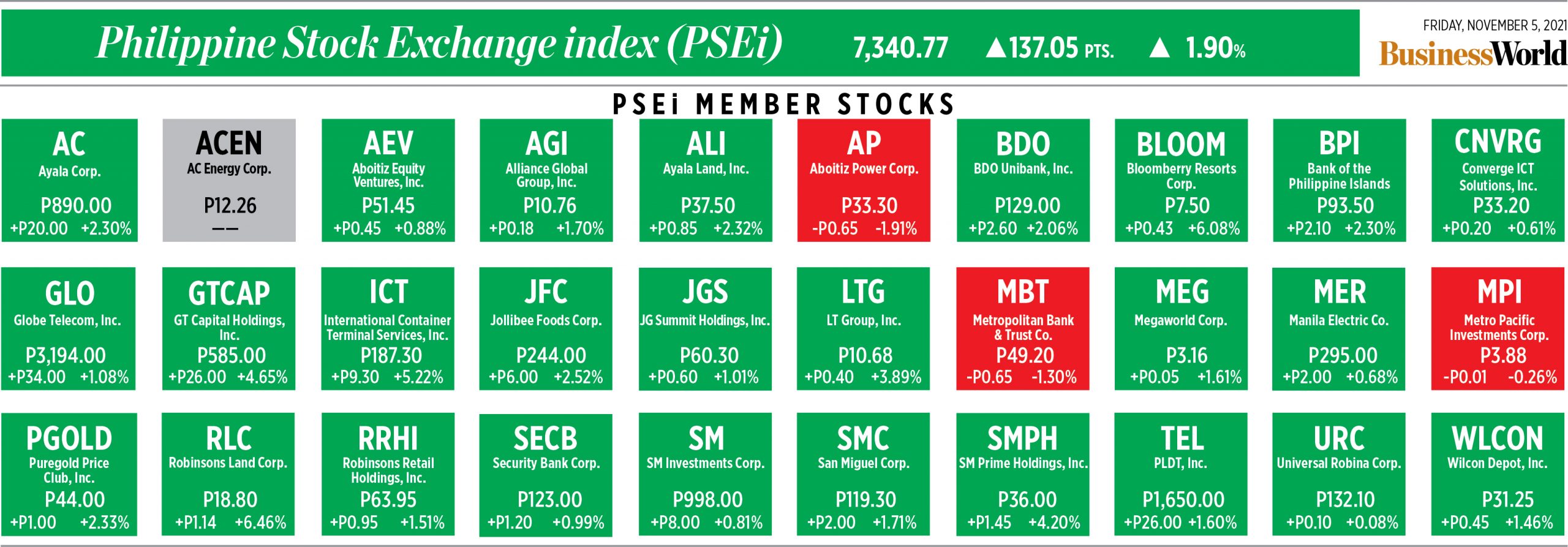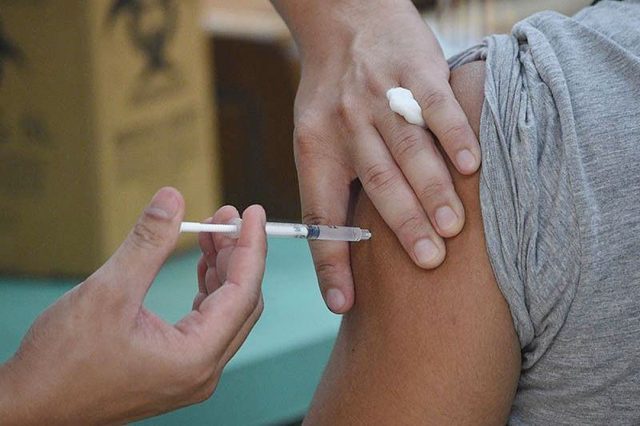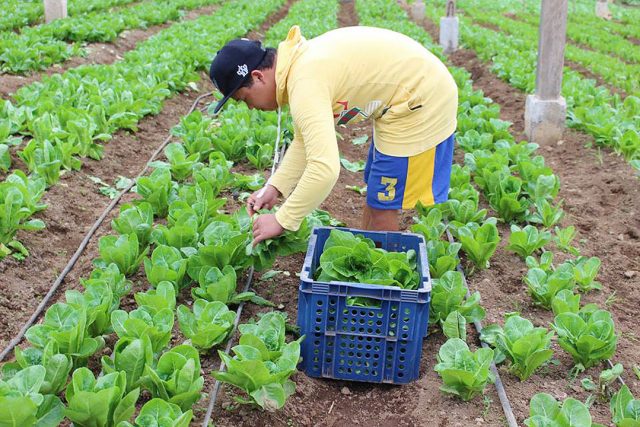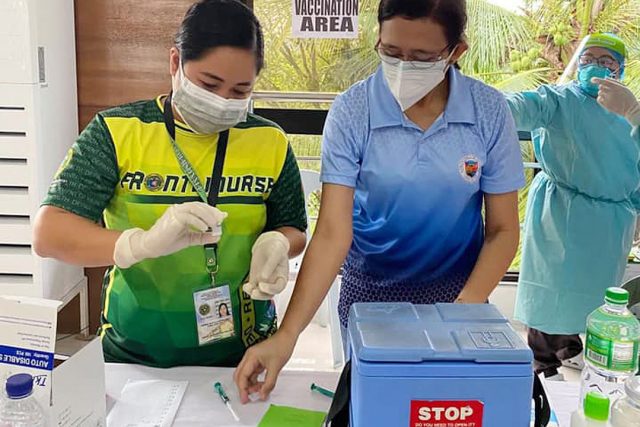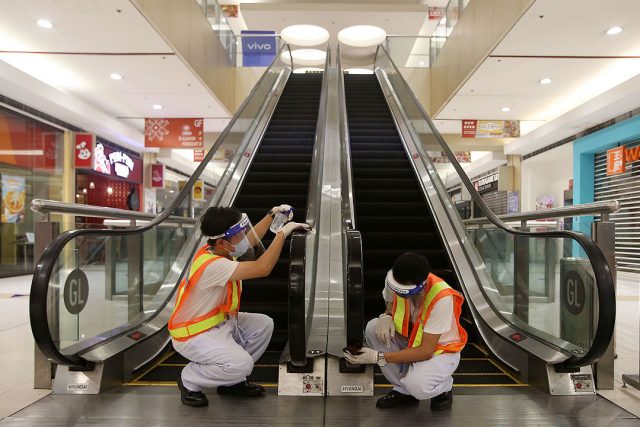Style (11/08/21)
Merrell releases limited edition Funfetti MOAB 2 Boot
OUTDOOR lifestyle brand Merrell has been at the forefront of the hiking shoe category for 40 years. Known for the Moab boot — a staple in yearly lists for “the best hiking boots” by The New York Times, Travel and Leisure, and Forbes — Merrell has a devoted fanbase that spans hardcore hikers to those who embrace outdoor fashion. To celebrate its 40th anniversary, the “Mother of All Boots” is given the funfetti treatment from its uppers down to its outsoles. The Funfetti Moab 2 Mid Waterpoof bears the hallmarks of the regular Moab such as durable leather uppers, a supportive footbed, and incredible on-trail traction. The uppers are reimagined in off-white while the speckled Vibram outsole is supposed to imitate rainbow sprinkles. The boot is punctuated by multicolor laces that tie the birthday theme together. These shoes may look like a sweet treat but they’re made to perform in the trails. This limited-edition Moab comes in whole men’s sizes from 7 to 12. Shop the Moab 2 Funfetti in Merrell concept stores nationwide and online at www.merrell.com.ph.
Unbox gifts from Korres
GREEK skincare brand Korres was born out of Athens’ oldest homeopathic pharmacy in 1996. This festive season, the brand is highlighting Korres Pure Greek Olive with an extensive selection of skincare, body care, and lip care essentials, as well as the Korres Eau De Toilette Collection featuring scents that tell different stories. One of the best-selling products, the Pure Greek Olive 3in1 Nourishing Oil, is rich in organic extra virgin olive oil and reinforced with a mixture of vitamins C, E, F, and omega-6 fatty acids for smooth and elastic skin. This multitasking product can also be used to achieve shiny, silky hair and prevent breakage and frizz. For removing impurities and make-up, there is Pure Greek Olive 3-in-1 Cleansing Emulsion. Another product is the creamy exfoliator Pure Greek Olive Creamy Exfoliating Scrub which has natural olive stone grains to effectively get rid of dead skin cells. To keep skin moisturized throughout the day without the sticky feeling, there is a lightweight day cream, the Pure Greek Olive Moisturizing Day Cream. Pure Greek Olive Nourishing Night Cream is enriched with antioxidant olive leaf extract, extra virgin olive oil, and hyaluronic acid. For lips, the Pure Greek Olive Lip Oil will keep them plump and supple. The ultra-hydrating lip oil also adds shimmer and a shiny finish. Pure Greek Olive Traditional Soap is a 100% natural olive oil soap base that gently cleanses the skin and leaves behind a soft and supple feel. The Pure Greek Olive Showergel is available in different, scents like olive blossom, verbena, sea salt, golden apple, lime, pomegranate, and peach blossom. It can be paired with Pure Greek Olive Body Cream which is available in the same scents. Other products are Pure Greek Olive Body Balsam and Pure Greek Olive Hand Cream. Korres also has a line of fragrances including Morning Mimosa, Vanilla Freesia, White Tea, Mountain Pepper, and Oceanic Amber. Korres products are available in select Beauty Bar stores, beautybar.com.ph, trunc.ph, and the Korres Flagship Store in LazMall.
Montblanc releases eco-conscious bags
MONTBLANC is introducing Montblanc Blue Spirit, a collection of bags and accessories containing regenerated fabric and other environmentally conscious materials. The bags are crafted for customers who care about their environmental footprint while expressing themselves through their style. All the material used in the eco-friendly line was selected to minimize environmental impact, starting with the fabric used both externally and for the lining of each piece — a sustainable nylon yarn called Econyl which is made of waste like fishing nets, carpets, and fabric scraps. Econyl can be recycled infinitely without losing its quality. The collection uses leather made with less water, chemical products, and CO2 emissions. The stainless steel in the detailing in 100% recyclable. Every detail made from plastic including the closures and buckles in certain styles have had a previous life. The straps are made with recycled polyester (Rpet or rePET) that is almost identical to virgin polyester in terms of quality, but its production requires 59% less energy and results in a 32% decrease in CO2 emissions. An internal leather tag stitched inside each of the pieces features a manifesto: “Those who dare, those who will, those who care make the difference.” The full Montblanc Blue Spirit assortment includes two city backpacks, a tote with straps so it can be worn as a backpack, an envelope bag to be worn over the shoulder and a mini envelope, a belt bag, and a duffle, wash bag, a pouch, and a case for overnight trips.
Uniqlo has offers, promos for holidays
GLOBAL apparel retailer Uniqlo will have a series of mega sales and promotions leading up to Christmas. The festivities begin with the 11.11 on Nov. 11, where shoppers can enjoy special offers and discounts on select LifeWear pieces. This will be followed by the Kanshasai (Thank You) Festival from Nov. 19 to 25. New and existing Uniqlo customers can also look forward to the Black Friday and Cyber Monday Sales on Nov. 26 and Nov. 29, respectively. To cap off the season’s festivities and special sale dates, Uniqlo will be conducting a 12.12 sale on Dec. 12. This Holiday season customers will be given a new and limited-edition design of the Uniqlo paper bag which includes parols (lantern). Uniqlo Philippines is also introducing singer and actress Sarah Geronimo-Guidicelli as the new Holiday ambassador. She will join Jose Mari Chan for a new and original Christmas jingle that will be played in Uniqlo stores nationwide. For more updates, visit Uniqlo Philippines’ website at www.uniqlo.com/ph.
Globe 0917 Lifestyle launches first sustainability line
GLOBE’S 0917 Lifestyle brand collaborates with Revolve, a Philippine-based social enterprise, to create products including T-shirts and totes using recycled polyethylene tetraphyte (RPET) bottles. The 0917 Lifestyle Sustainability Shirt, an especially recycled custom unisex shirt, is made from 60% cotton and 40% RPET, equating to roughly four to six one-liter plastic bottles. The tote bag is made from 100% recycled plastic bottles, exactly three one-liter bottles worth. The new sustainability collection is available online at http://0917lifestyle.com/collections/globe-of-good-for-sustainability. To know more about 0917 Lifestyle, visit www.0917Lifestyle.com or check its social media pages. Instagram: @/0917 and Facebook: 0917 Lifestyle.
Yankee Candles on sale
PERFECT Serenity Bliss, Inc., the authorized distributor of Yankee Candles in the Philippines, is holding the PSBI Anniversary Online Sale on its website and online stores. There is an extensive catalog of marked-down Yankee Candle items, from the collection of home fragrances and candle accessories to car scents. The newest candle collection, launched in September, is The Signature Collection. For details on the sale and more, visit www.serenitybliss.com.ph, or follow its social media pages on Facebook www.facebook.com/yankeecandlephilippines and Instagram www.instagram.com/yankeecandlephilippines.
Xiaomi teams up with Swarovski
TECHNOLOGY brand Xiaomi has announced its partnership with Swarovski on a limited edition offering of Xiaomi 11 Lite 5G NE. An iconic Swarovski pendant will be included with selected Xiaomi 11 Lite 5G NE variants across Malaysia, Philippines, Singapore, Thailand and Vietnam. The limited-edition box contains a state-of-the-art Xiaomi 11 Lite 5G NE paired with Swarovski’s signature swan necklace, embellished with a gradation of blue crystals. Xiaomi introduced a new color for the limited edition — Snowflake White, matte and frosted white similar to freshly fallen snow, matching the elegance of Swarovski. The 8+128GB variant of Xiaomi 11 Lite 5G NE packaged in a premium gift box that comes with the Swarovski pendant will retail at P18,990 in all participating Xiaomi Authorized Stores from Nov. 5 to 12. For details on the Xiaomi and Swarovski’s limited time offer, follow the official Xiaomi Facebook page.
OPPO gadgets up to 56% off on 11.11
OPPO will be offering discounts of up to 56% on select gadgets during the 11.11 online brand sale on Shopee and Lazada on Nov. 11. Get deals on OPPO smartphones, including A15 (3GB), A15s, A16 (3GB), A54 (6GB), A74 5G, Reno5, Reno5 5G, and select IoT accessories such as Enco Buds, and OPPO Band B1. Starting Nov. 5, shoppers can start collecting store vouchers amounting to P200 for every minimum spend of P9,999 and P400-off for a minimum purchase of P14,999 which can be redeemed on Nov. 11. Shoppers will have a chance to get free wireless G25 Earphones for all mobile phone orders for a limited time on Nov. 11, from midnight to 2 a.m. Additionally, orders made during the sale will be included on the 11.11 OPPO Livestream raffle via Lazada and Shopee. Ten winners from Shopee and Lazada will receive their orders for free, and six winners from Lazada will win Globe LTE-A Home Prepaid WiFi Modem with three months of 100GB of data. For more updates and detailed promotion mechanics about the sale, visit OPPO’s official website at www.oppo.com/ph or via the official Facebook page at OPPO Philippines.
Scandinavian oral care design arrives in PHL
JORDAN, a Scandinavian brand that has been caring for people’s teeth since 1927 and with world-wide presence in over 50 global markets has now arrived in the Philippines. It brings its range of good quality, easy-to-use, and stylish products to make people’s dental care routine as uncomplicated as possible. Each product is made with carefully selected materials and a purposeful design that has been recognized by international design award-giving bodies such as the Red Dot Design Award and Norwegian Design Council. Its product range for kids, Jordan Steps, offers toothbrushes and toothpastes that are designed with different features that are tailor-made for the child’s age and oral development to help parents establish fun and good dental care habits. For adults, Jordan has a range of products that fit different oral care needs and preferences. Reflecting the Scandinavian and Nordic countries relationship to nature, sustainability is an integral part to Jordan’s product portfolio. The Green Clean toothbrush is made of sustainable and recycled materials — with bio-based nylon bristles, a 100% recycled plastic handle, and packaging made of recycled paper fibers. Jordan Oral Care products are now available in all South Supermarket branches and its official stores on Shopee and Lazada.To know more about Jordan, visit https://www.jordanoralcare.com/.
4-in-1 body lotion includes mosquito repellant
HELLO Glow has introduced Citronella 4-in-1 Body Lotion which contains citronella which irritates and drives away mosquitoes. It is also enriched with Vitamin E which helps protect the skin from damage. It hydrates the skin and serves as a moderately effective natural barrier against the sun. It also contains aloe vera, which has anti-inflammatory properties that can reduce pain or swelling. Aloe vera also helps moisturize, soothe, and hydrate the skin. Finally, Hello Glow 4-in-1 is also infused with the cooling effect of peppermint, for that cool, refreshing feeling. Hello Glow Citronella 4-in-1 Body Lotion (P250) available in Watsons, Lazada (lazada.com.ph/shop/hello-glow/), Shopee (shopee.ph/helloglowofficialstore), and in Ever Bilena Direct Sales.
Anytime Fitness PHL launches year-end sale
ANYTIME Fitness Philippines concludes 2021 with a nationwide Year-End Sale. It will be launched on 11.11 and will run until Nov. 25. The campaign offers the lowest rates for both NCR (National Capital Region) and provincial clubs. The sale also activates the online sign-up option for all clubs nationwide, a first for Anytime Fitness PH. New joiners can avail of the sale rates by visiting any Anytime Fitness club or via the online sign-up links in the clubs’ social media pages. For inquiries visit the Anytime Fitness Facebook page https://www.facebook.com/AnytimeFitnessPhilippines, Instagram page https://www.instagram.com/afphilippines_/, and website https://www.anytimefitness.ph/.




















